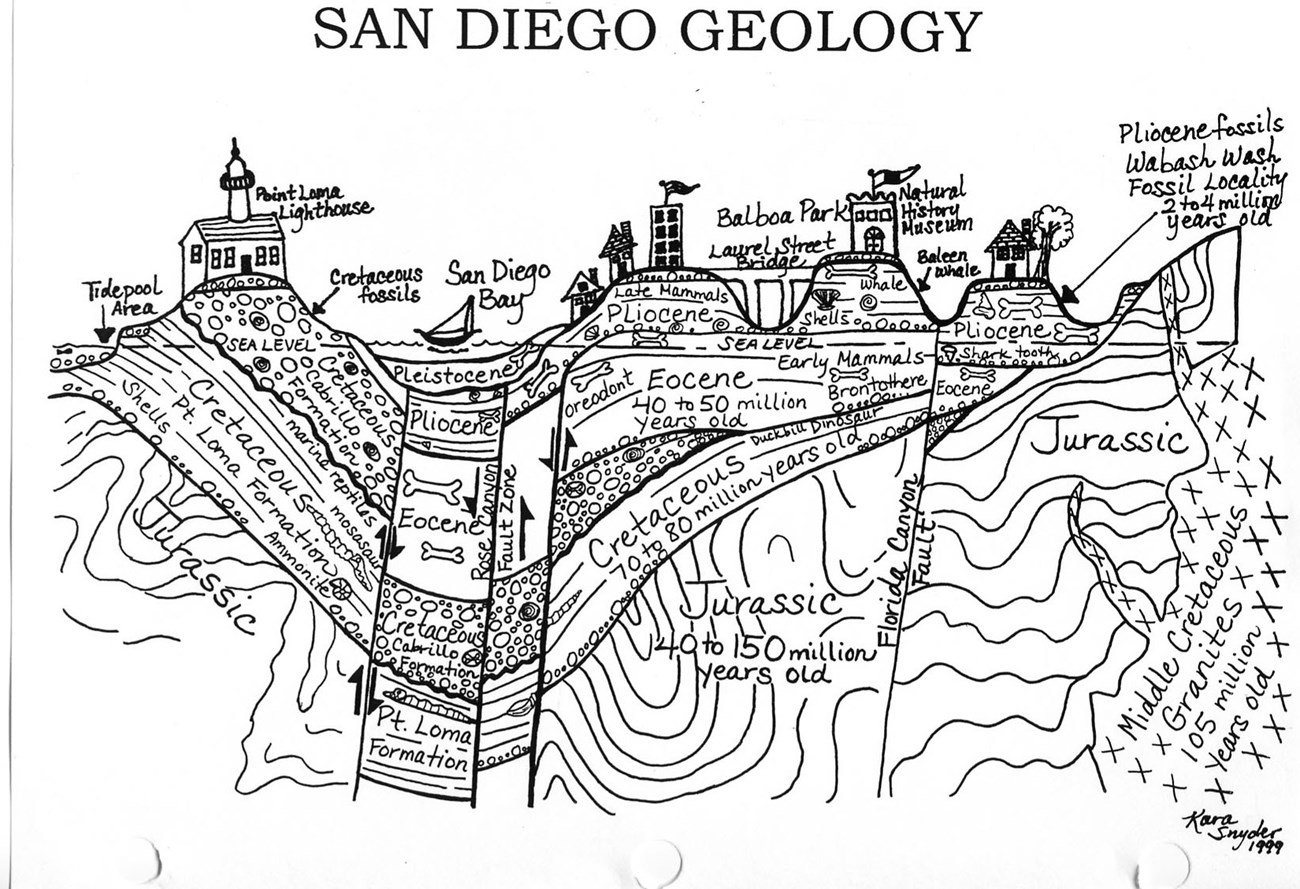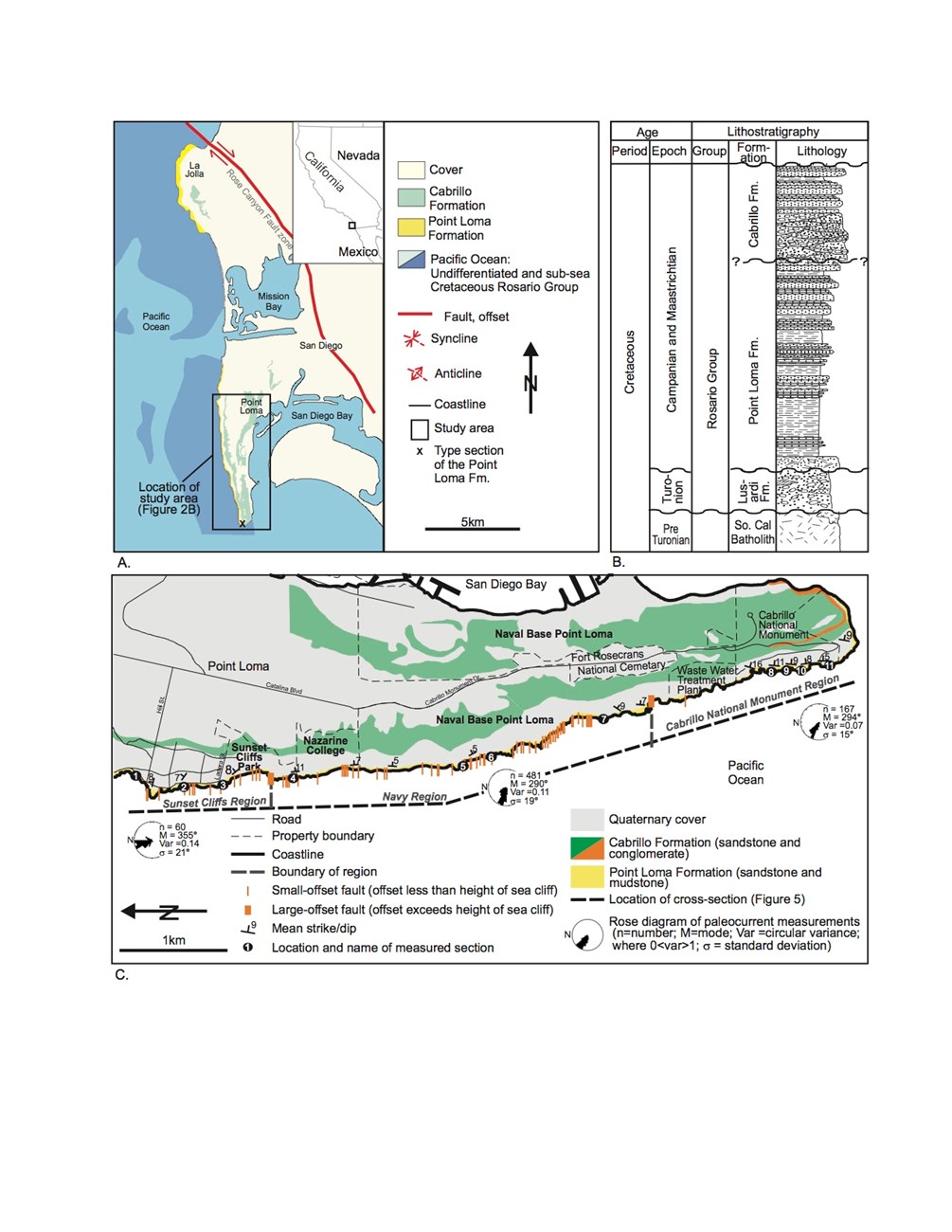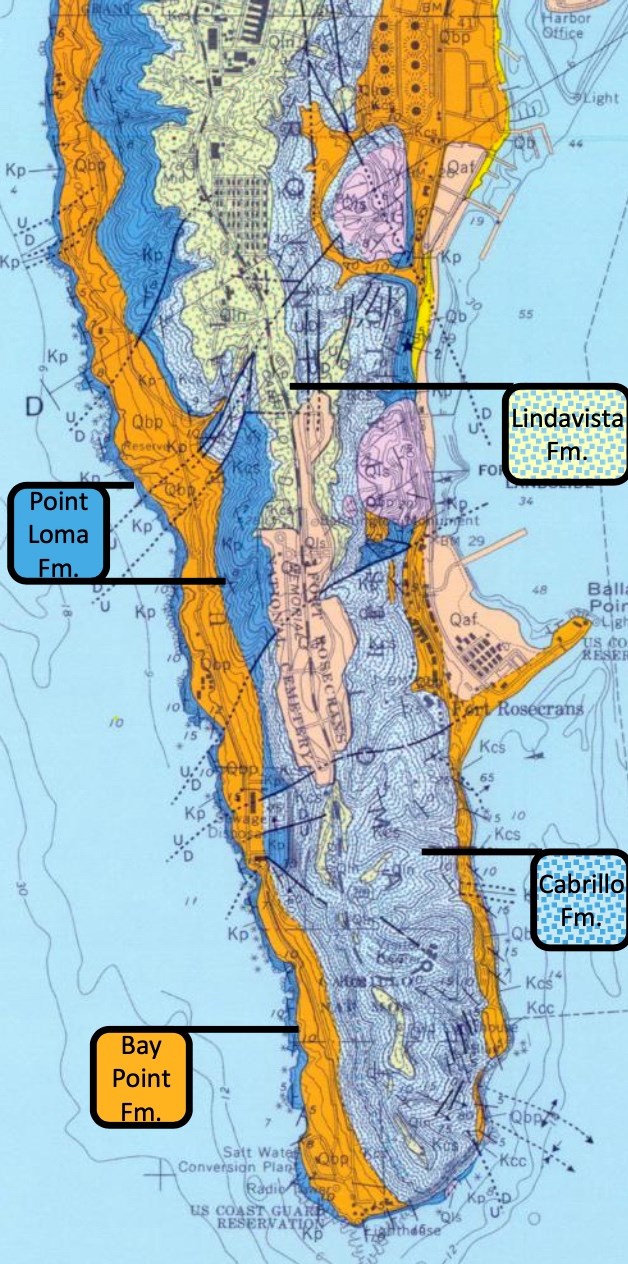
The geologic history of Point Loma is a story dominated by two periods of time – when the rocks formed, and when they were uplifted and shaped into the peninsula we see today. First, the peninsula’s main mass of rocks accumulated as sand, mud, and gravel dumped into the Pacific Ocean during the late Cretaceous Period, about 76 million years ago. Then, those sedimentary rocks were uplifted and deformed by faulting, cut across by ancient beaches and sea floors, and modified by erosion during the last 2 million years or so (the Quaternary).
The elongated mass of eroded sedimentary rock known now as the Point Loma peninsula was created by sediment flowing out of the eastern foothills and mountains nearly 80 million years ago. As these sediments were deposited into the Pacific Ocean they formed a huge apron of sediment called a submarine fan. Over millions of years, sediment flows continued to build the submarine fan upward and outward. Over time the mud layers were covered beneath sheets of sand, which in turn were covered by layers of gravel. What is presumed to be an interval of faulting caused an abrupt change to this consistent pattern of layering. This change is evidenced by a layering of sand over the top layer of gravel.
How did these submerged layers rise to form the peninsula we see today? Compression along the Rose Canyon fault caused the Cretaceous sediments to rise and tilt to the northeast at a 5-15 degree angle. Movement along the Rose Canyon fault continues today.
The most recent period of geologic time, the Quaternary, covers the last 2.67 million years, from the Pleistocene (Ice Age) through the Holocene (the modern or most recent) epoch. Because no major periods of deformation have occurred in this time, much of the Quaternary history in San Diego is preserved. However, localized uplift in the Point Loma area has removed some of the deposits. Some basic types of Quaternary deposits preserved locally are marine terrace alluvium (water deposited), Aeolian (windblown) sand, and colluvium (gravity deposited).
For more in-depth information on our local geology we’d recommend reading “Understanding the Life of Point Loma” produced by the Cabrillo National Monument Foundation and “The Rise and Fall of San Diego” by Pat Abbott.

|
Last updated: March 25, 2020

